There is no doubt that the first place you should visit in Veliko Tarnovo is the Tsarevets fortress. It was once the most important fortification of legendary Tarnovgrad – the capital of the Second Bulgarian state. This fortification stood unconquerable for centuries with its three rings of fortification walls and the man-made abyss just below the main entrance.

Just in front of this gate we meet Temenuga Georgieva, a tourist guide from the Regional Museum of History in Veliko Tarnovo. We are grateful to the museum for helping us explore not only Tsarevets, but also other important places in Veliko Tarnovo – the Trapezitsa hill, the Museum of Bulgarian Revival and Constituent Assembly, the Prison Museum, the historical churches in Asenov neighbourhood, the ancient roman city Nicopolis ad Istrum and many more. We think it is very important to visit Tsarevets with a guide – it really helps to get to know the place. Another advise from us – go to Tsarevets in the morning, especially in the summer season.
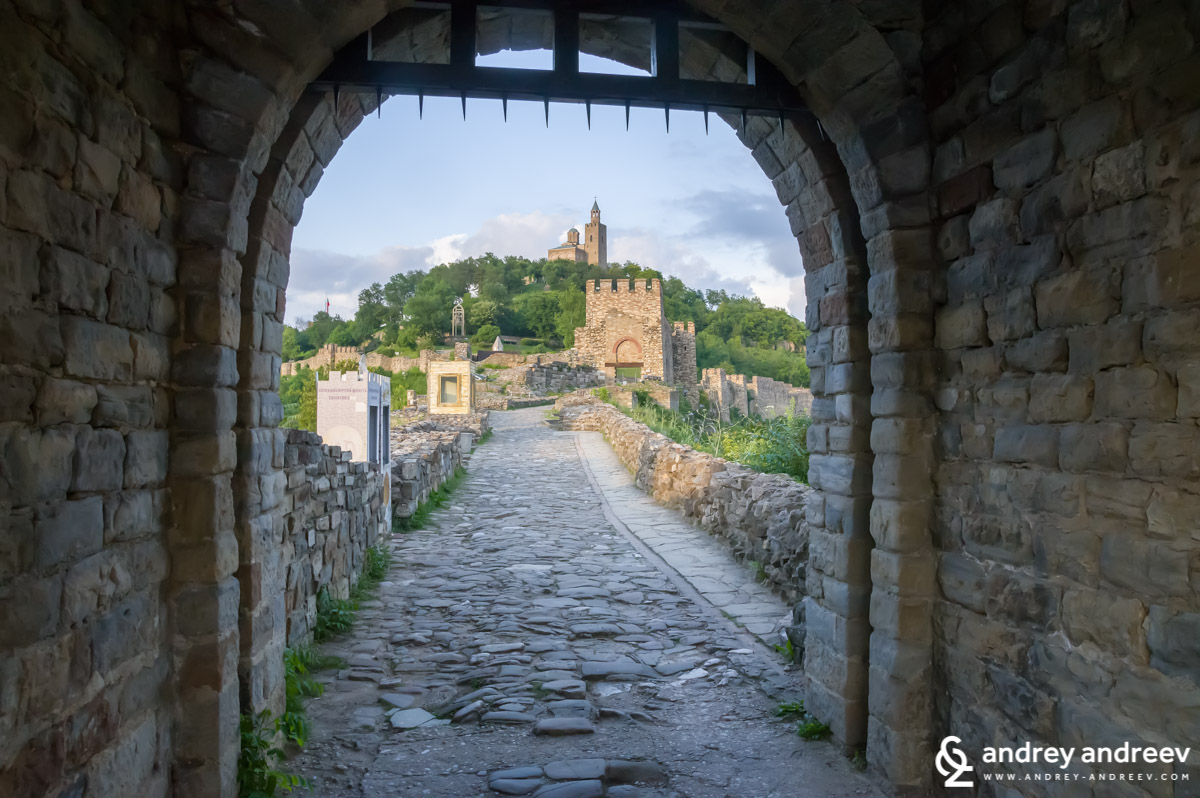
The ancient Thracians and the Roman treasures
The earliest tracks of life on Tsarevets hill date back to the late halcolite era, some 4200 years BC. Later the hill was a home of Thracian tribes and settlements. Around 5th century AD was built an early Byzantine fortress. It is believed that around that time the hill was inhabited by citizens of the nearby Nicopolis ad Istrum, once a large Roman city, which was in decay during that time. There are also legends, saying that the Romans moved the treasures of ancient Nicopolis to the Tsarevets hill and stored them in secret tunnels and labyrinths under the hill. When they were forced to surrender, they placed deadly mechanisms and poison in the galleries where the treasures were kept. This story is either completely true and the treasured were self-destructed, or is complete myth. In support of both theories, the mythical treasures have not been found so far.
Tsarevets and the Bulgarians
Let’s get back to the Bulgarian state, about whose history we are speaking in this article. The first Bulgarian settlement was established around 8th century on the grounds of the old Byzantine fortress. The major development of the hill happened during the Second Bulgarian state (12 – 14 centiry) when Veliko Tarnovo (Tarnovgrad) became a capital of the state. Nowadays we enter the former capital through the same place as the glorious times, from the west. If you look below your feet when you pass through the first gate, you will notice the man-made bridge, connecting two tall rocks. The rocks were once connected but the abyss was created artificially for security reasons.

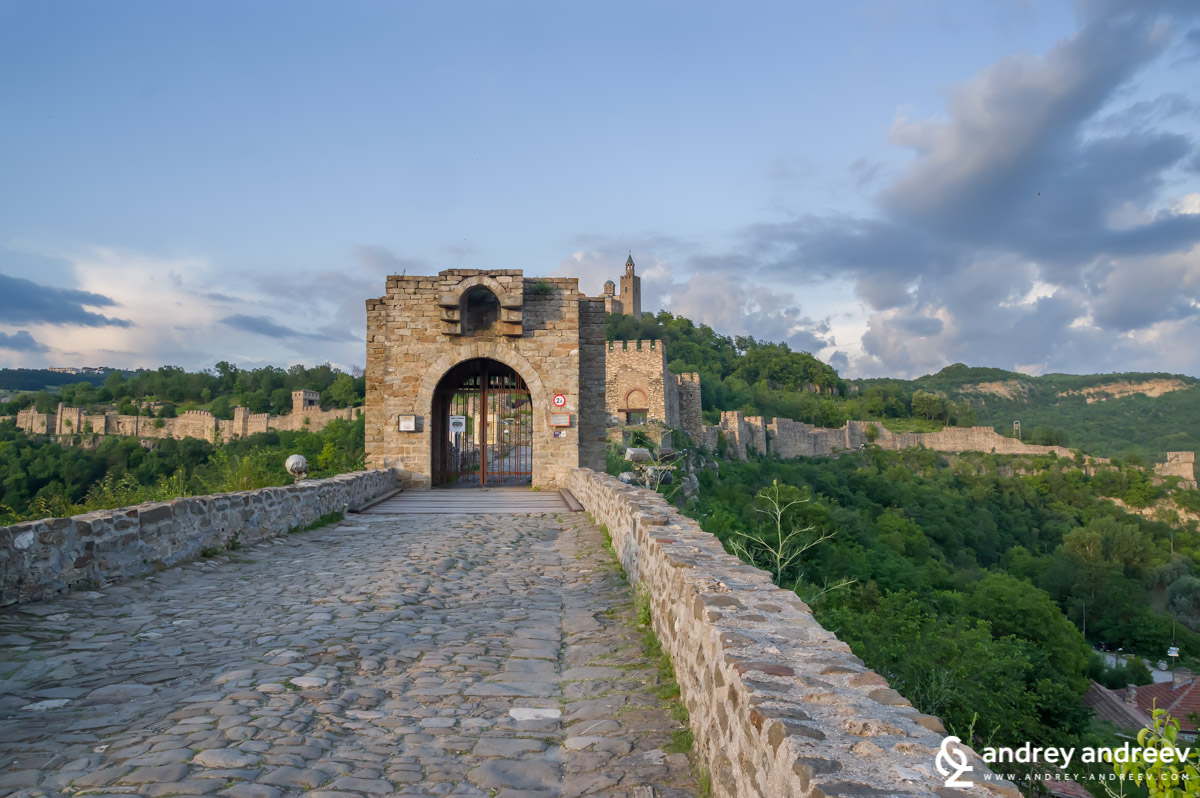
After passing the first gate, to enter the fortress one should pass a few more consecutive gates (3 or 4), each one guarded by towers. Besides this main entrance, there were two more minor entrances to the fortress. One was on the northwestern wall and another one near the southeastern combat tower. While passing through the gates one by one, we imagine how actually anyone could fight this complicated guard. Meanwhile, our guide Temenuga keeps speaking to the smallest details about the fortifications, the walls, the history and life of Tsarevets.

Tsarevets was a densely inhabited area. The remains of medieval residential, religious and other structures can be seen on every step. There are tracks of about 470 residential buildings and it is thought that the hill was inhabited by around 3000 people in the 12 – 14 century. You can walk among the ruins for hours and try to imagine how medieval Bulgarians used to live.
Before we continue our walk uphills, to the most important places on Tsarevets, let’s remember a little bit more about Tsarevets and its dramatic history.
The siege of Tarnovo
Some events in the history of Bulgaria are known to all of us but the details around them are still very unclear due to the lack of historical documents. But I will try to tell you in brief what I have read about the siege and fall of Veliko Tarnovo, because this was one of the most dramatic moments in the history of Bulgaria.
At that time (1393) sultan of the Ottoman empire was Bayezid I. Bulgaria was divided into separate tsardoms and despotates – the Tsardom ov Vidin, Tsardom of Tarnovo and the Despotate of Dobruja. On the throne of the Tsardom of Tarnovo was Ivan Shishman. In the spring of 1393 Ottoman troops surrounded the capital of the Tsardom of Tarnovo – Tarnovo. At that time this was the best developed and fortified city, and strategically the most important. The Ottomans, led by Bayezid I, besieged the city from all sides.
During that time, Bulgarian ruler Ivan Shishman was in the well-fortified city of Nikopol, waiting for reinforcements from Sigismund of Luxembourg. The Bulgarian population was led by Patriarch Euthymius, the leader of the church. After three months of siege Tarnovo fell. According to the widely known version, the patriarch agreed to hand over the city to avoid famine and illnesses among the population and he managed to negotiate good conditions, but the Ottomans did not abide to them. There are also legends that the fortress fell after a betrayal from a foreigner within its walls.
Whichever version is correct, Tarnovo fell of 17 July 1393. The Turks had no mercy – all the aristocrats and powerful people were murdered. All the churches were burned down and the patriarchal church was turned into mosque. The later canonized patriarch Euthymius of Tarnovo was sent in exile.
Tsarevets under Ottoman rule
During the Ottoman rule times, Bulgarians were chased away from Tsarevets and Turks occupied the area within the fortification walls. Mosques were built and the hill became a Turkish neighbourhood. The opposite fortified hill – Trapezitsa, was abandoned in the following decades. Gradually, the city of Tarnovo started looking more like the way it looks today.

Despite every rock here is an attraction, we continue our walk uphills to see the most notable attractions on Tsarevets. Or at least the largest in scale.
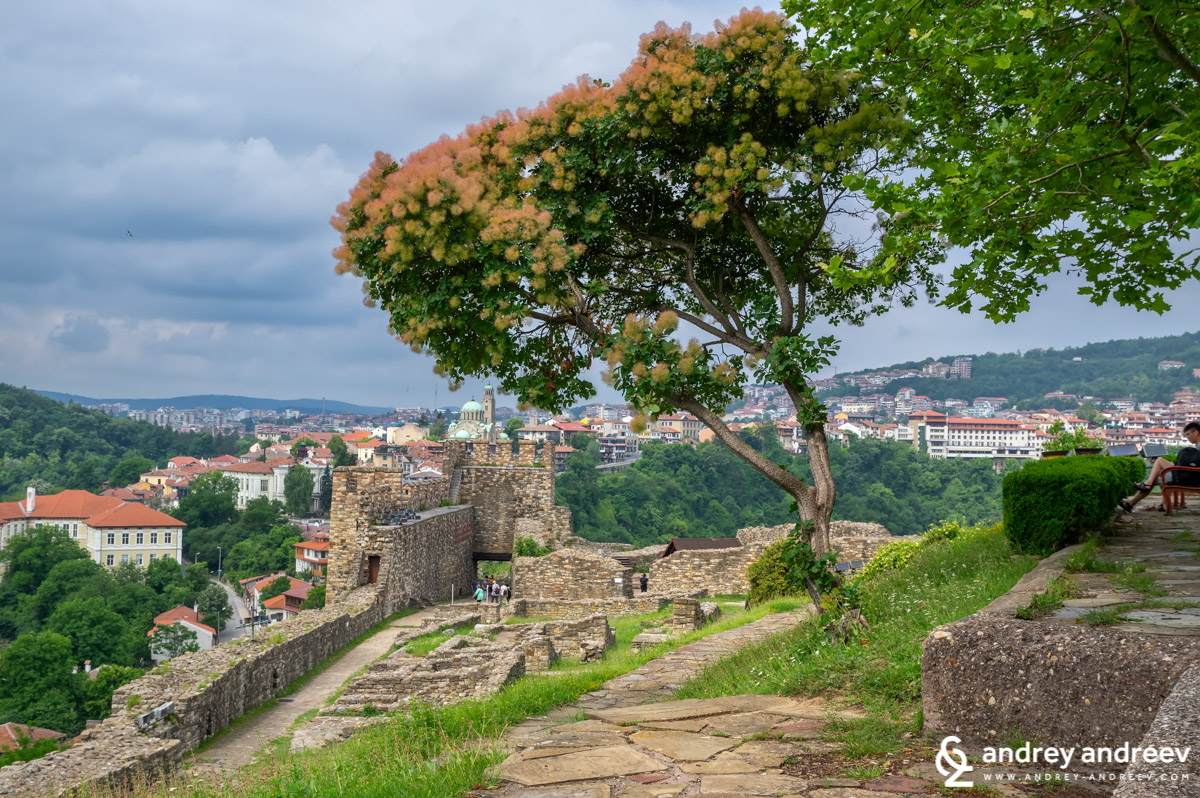
The royal complex on Tsarevets
We would really like to imagine the castle of Bulgarian kings in its full glory. The royal complex underwent several renovations between 12 – 14 century. It covered an area of almost 3000 square metres and looked like a real medieval castle, surrounded by a fortification wall and combat towers. The complex included throne room and private chambers of the ruler with magnificent interior. A royal church was also in place. Indeed, the relics of Bulgarian saint – St. Petka, were buried in the royal church. Some of the Bulgarian kings who ruled during the 14th century were also buried there.
We sat on the place of the throne room and tried to imagine the once lavish establishment. There is almost nothing left from the marble decorations and frescoes on the walls. This is not a surprise – the royal complex suffered some of the most dramatic events in the Bulgarian history and was destroyed after the fall of the capital to Ottoman rule in 1393.
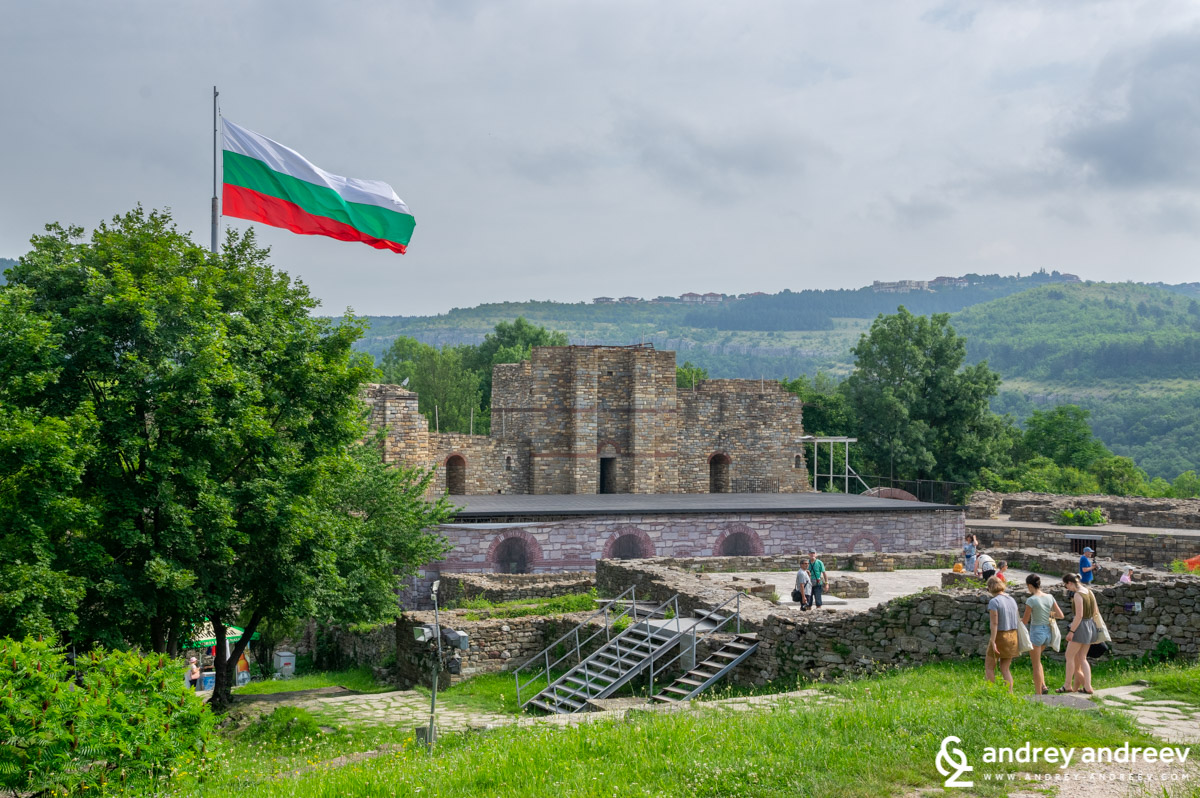
The Patriarchal Church “Ascension of Christ”
The most emblematic place on Tsarevets hill, just atop of the hill, is the Patriarchal church “Ascension of Christ”. Once the whole religious life of the state was governed from there. The patriarchal complex was another fortress itself, guarded by a tower and a fortification wall. Central part inside it was taken by the church “Ascension of Christ”. In the temple were kept the relics of St Michael Voin and some canonized saints – Bulgarian Patriarchs Joachim I, and Joachim Macarius III.
Temenuga joins us in the church who was restored in the 1980s during a major project for reconstruction of the old capital of Bulgaria. Nowadays the temple is with a museum statute and is not functioning as a church. The walls are not painted according to the canon. Instead, the decoration was made by artist Teofan Sokerov and recalls important scenes of the history of Bulgaria.

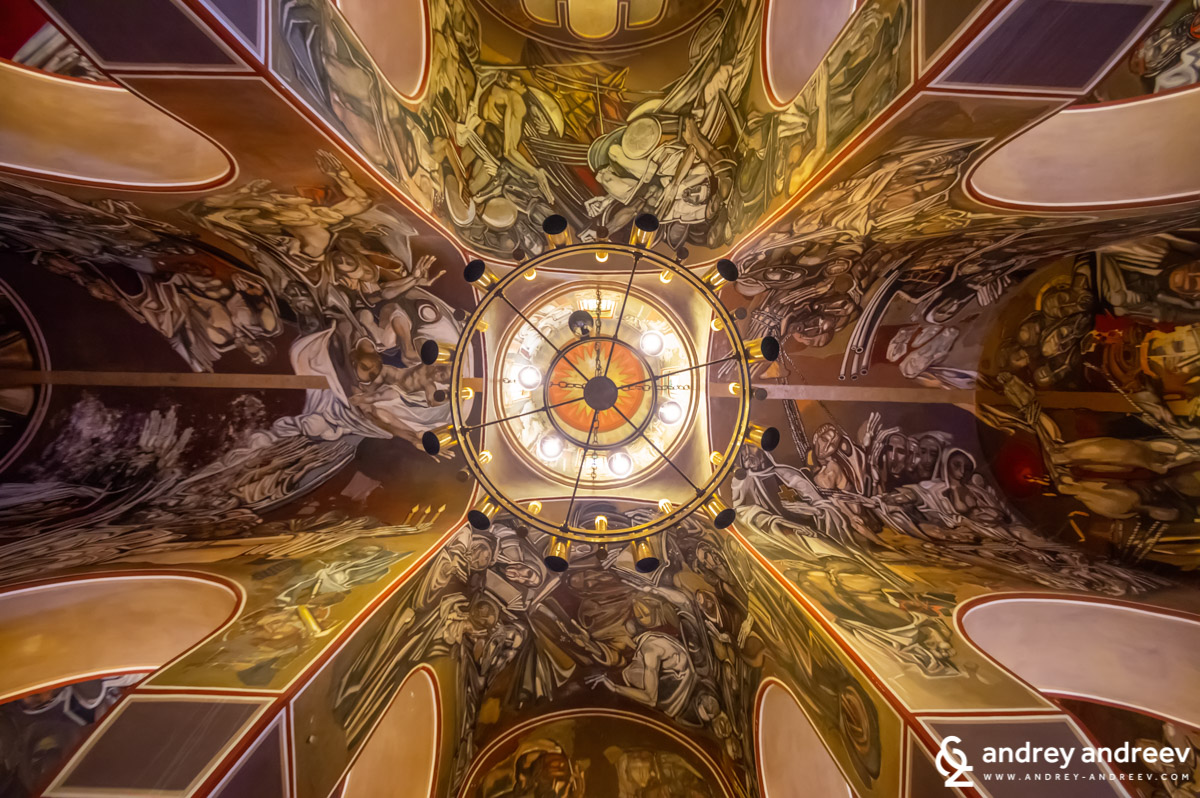

We stayed in the temple for a long time. There is some very special energy inside. The dark shades remind us of the tragic end of the Second Bulgarian Kingdom. But on the walls we see so many glorious and important events from the Bulgarian history that the feeling of national pride quickly takes advantage. Maria, as usual, needs even more time. It was her first time in the church, despite she had been on Tsarevets before. But her reaction is explainable. The church is indeed a very special place and it is on the top of the hill and on the top of our walk for purpose.

The southeastern combat tower, known as the Baldwin tower
We walk down from the church, we left our guide up to lead the next group of tourists. We walk the path by the fortification wall to reach the southeastern combat tower, also known as the Baldwin tower.
Its name actually comes from the legend that in 1205, after the victory of Bulgarian Tsar Kaloyan at Adrianopol, the Latin emperor Baldwin of Flanders was captured and taken to this tower, where he later died. However, another theory suggests that he just disappeared after the battle. It is always interesting to climb the tower, look towards Veliko Tarnovo and again try to imagine how the majestic capital was once guarded.
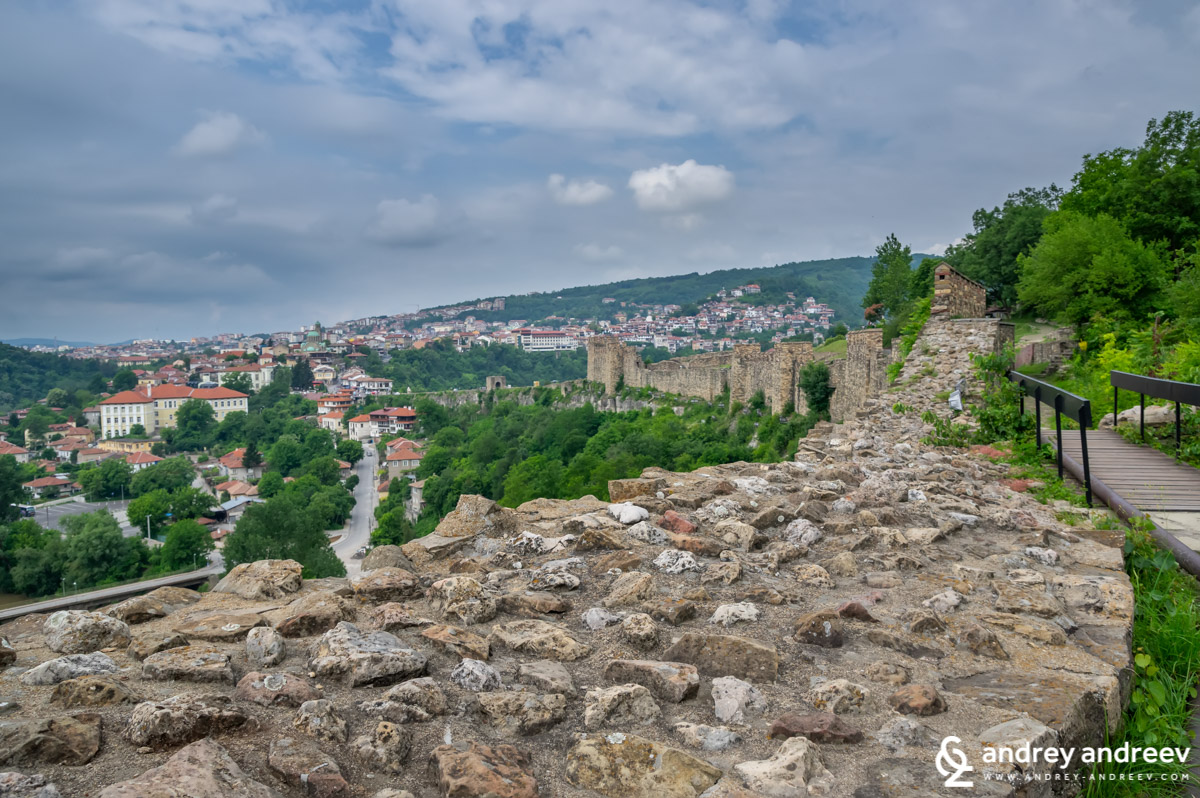
On our way back, we again pass by remains of numerous buildings. On the hills were found tracks of around 470 residential buildings, 23 churches and 4 monasteries. It is almost lunch but we still have not seen everything on Tsarevets. And the thick walls, the palace remains and the church stand there so gloriously like they have never moved. Indeed, both the palace and the church were destroyed after the fall under Ottoman rule in 1393. Their remains were uncovered 500 years later, after the liberation of Bulgaria, and were partially restored.

If you are lucky – the Sound and Light show
We are extremely lucky and almost every time we visit Veliko Tarnovo, we catch a performance of the Sound and Light show. The Sound and Light show is an amazingly beautiful and emotional experience. The lights play on the Tsarevets hill under the dramatic music and bells ringing, resembling the glorious times of Bulgaria. No matter how many times we have watched it, it again and again makes us lose track of time and go back through the centuries. So if you are going to Veliko Tarnovo, check the program of the show – you may be lucky to see it.

The view from Tsarevets – what else to see in Veliko Tarnovo?
From all side of Tsarevets we see important places in Veliko Tarnovo. The hill was indeed a strategically important place in the history of Bulgaria. Nowadays from Tsarevets you can see the opposite hill – Trapezitsa, that was also a flourishing neighbourhood in the times of the Second Bulgarian Kingdom. Trapezitsa was also open for visitors a few years ago and you can climb and see the remains of multiple churches and other buildings. The entrance to the hill is from its northern side. You can also go up by funicular (depending on the weather).

If you walk down the street that passes by the entrance to Tsarevets, you will reach the Asen’s quarter, about which we have written in a previous article. In this quarter you can see some of the most important churches in the history of Bulgaria, including the St. 40 Matyrs church where are buried several Bulgarian rulers. Another curious site to see is Shishmanova Banya, a former bath, just next to the St. Peter and Pavel church.
From Tsarevets you can also clearly see the buolding of the former Konak, now Museum of Bulgarian Revival and Constituent Assembly. Just behind it is the Prison Museum.
Where to stay in Veliko Tarnovo – hotel with good location near Tsarevets
During our last visit to Veliko Tarnovo we stayed in the very nice and cozy History Inn Guest House on the historical Gurko street, overlooking the river and the Asenevtsi monument. Its location is also wonderful for exploring the city centre. It is located at just 3 minutes walking to the Museum of Revival and Constituent Assembly and about 10-15 min walking from Tsarevets.
[info]Veliko Tarnovo is one of the top places to visit in Bulgaria. From Sofia to Veliko Tarnovo you could travel by train (quite a complicated and time-consuming option) or bus (around 3 hours). I personally would rather recommend a third option – with an organized guided tour. One of our partners is offering a wonderful day tour from Sofia to Veliko Tarnovo and Arbanassi. Check here the options and book a tour with a 5 % discount with promo code ANDT18 I have arranged especially for my readers.[/info]
Check more places to stay in Veliko Tarnovo with a close location to Tsarevets on Booking.
Booking.comFollow us: Instagram and Facebook
